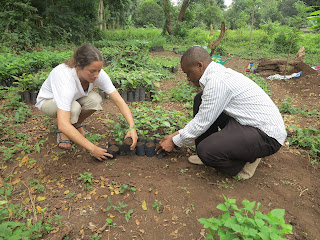As well as our target to plant one million indigenous trees
in the Rau Forest reserve by the year 2030 Rau Eco Cultural Tourism is also
working with the community to find a sustainable balance in the use of the
forest. If you come on one of our tours you will see that our work is not just
about planting trees but we also work extensively with the local population,
particularly with youth groups and schools to teach them about the value of a
sustainable forest to all
Local communities rely on the forest for firewood, charcoal
and timber. Firewood and charcoal are the main source of energy for cooking and
other domestic activities, timber is the principal construction material for
housebuilding and for furniture. Tanzania has a very young population and the pressures
of population growth are felt in all aspects of daily life. Areas are needed
for cultivation and human settlement but this needs to be sustainable. To
realise the promise of the future we must not lose sight of the reality of the
present. At Rau Eco we are committed to exploring sustainable solutions for
both the forest and the local community.
Our mass environmental education campaigns such as the Root
and Shoot clubs we run with in local schools and our ‘GIVE BACK TO NATURE’
project help to raise environmental awareness within the local communities and
teach people about the importance of the forest and the flora and fauna found
in it. Rau Eco Cultural Tourism depends on our Eco tours to generate revenue
used in conservation of the Rau Forest Reserve.
How do these programs work? How does RAU Eco contribute? Why
not volunteer with us and find out more about our important work. Please email
us at rauecotours@gmail.com or come along to one of our events and get involved.








